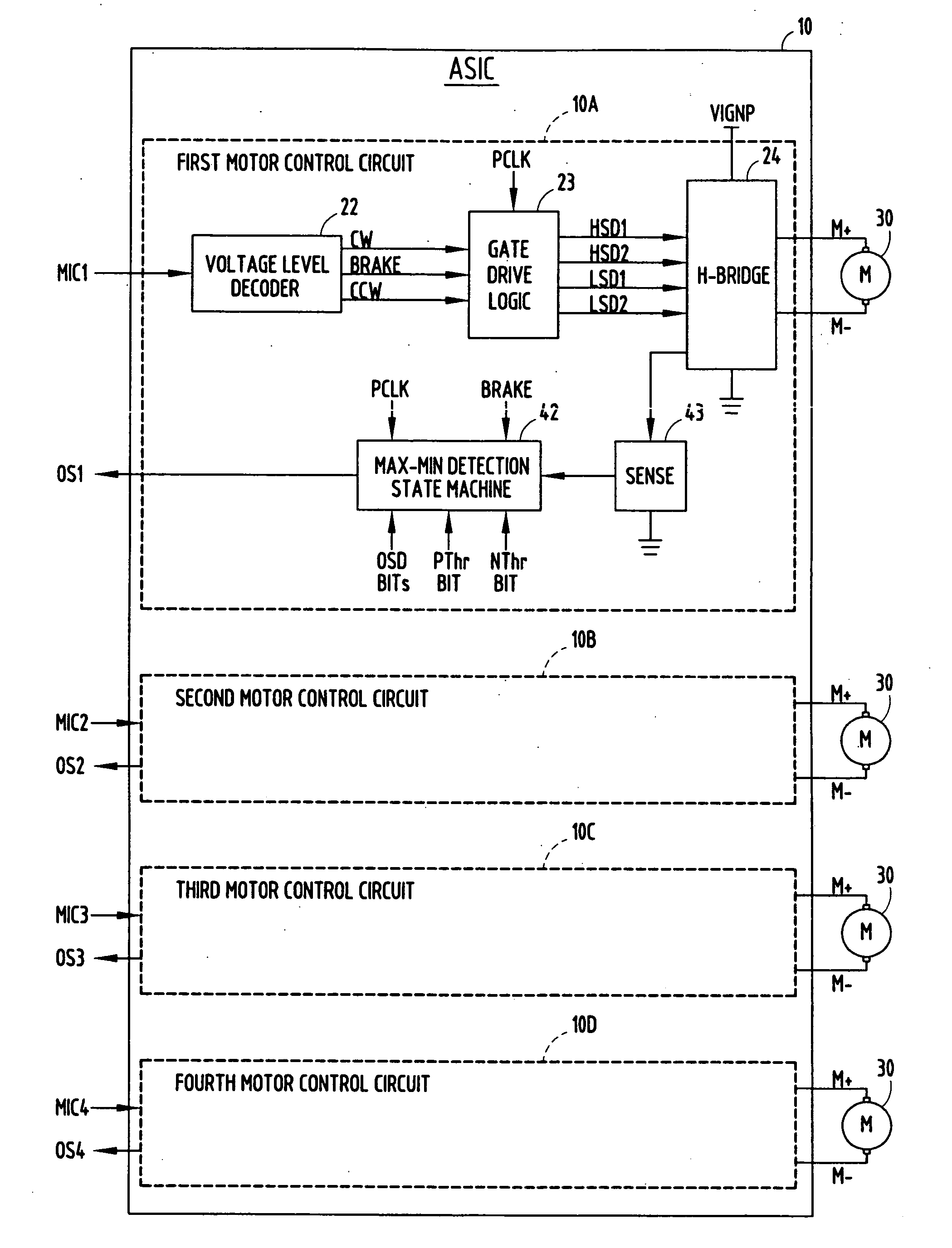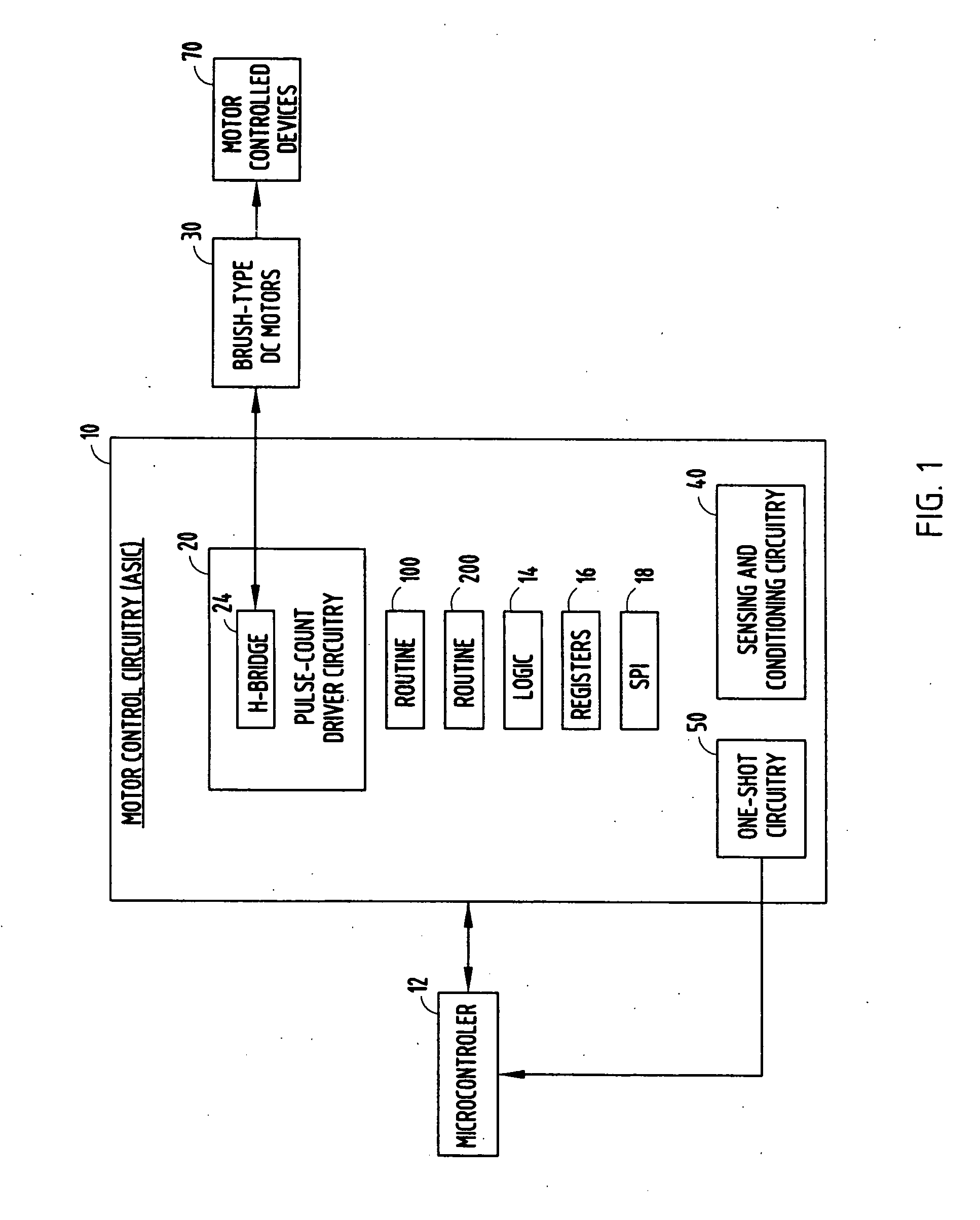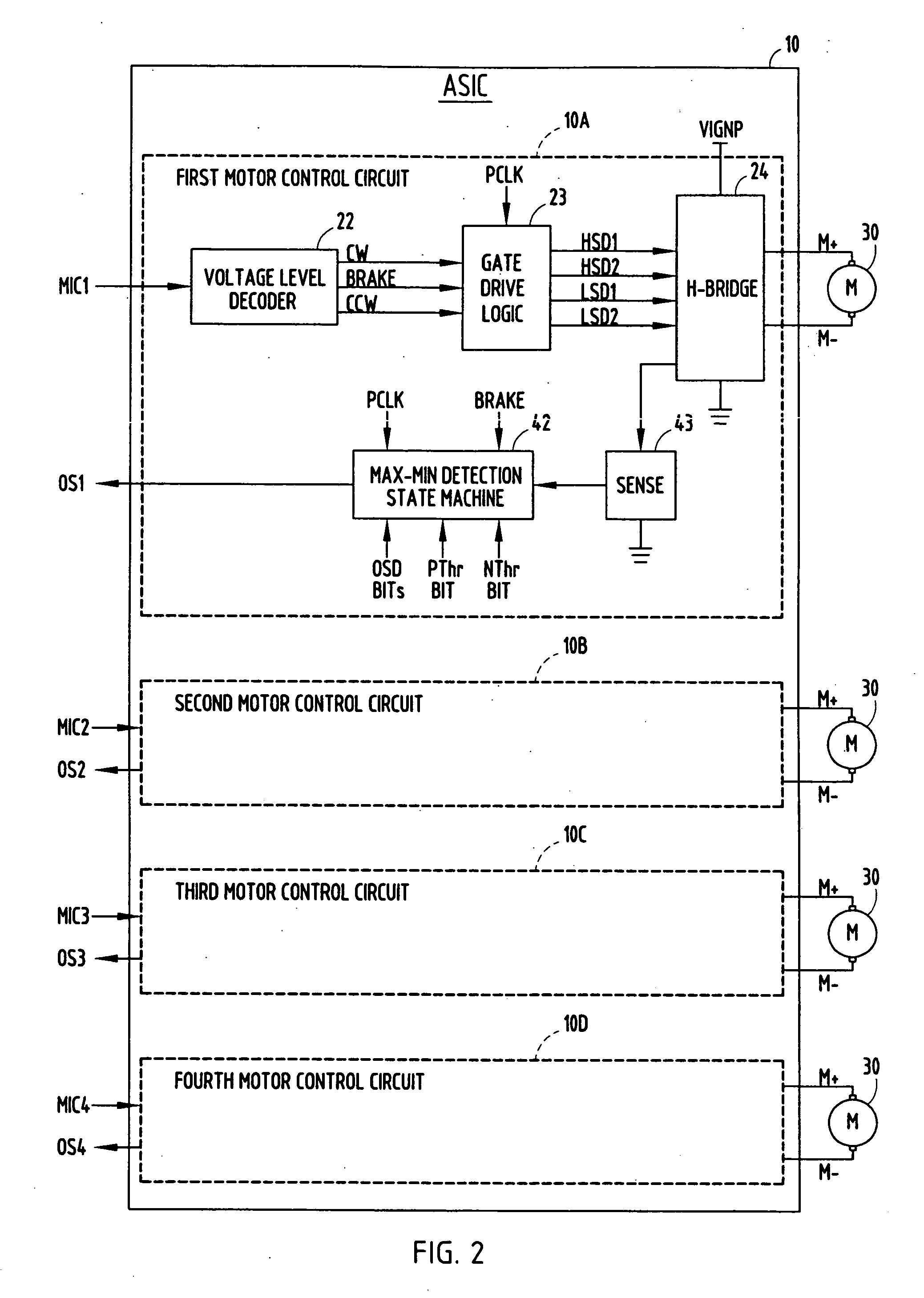Method of selectable simultaneous/sequential motor drive in a multiple drive circuit including failure detection
a multiple drive circuit and simultaneous/sequential motor technology, applied in the direction of dynamo-electric converter control, dc motor rotation control, multiple dynamo-motor starters, etc., can solve the problem of high noise, poor signal to noise ratio, cross-talk and other sources of noise, etc., to reduce noise sensitivity or significantly reduce the effect of motor current waveform characteristics and noise sensitivity
- Summary
- Abstract
- Description
- Claims
- Application Information
AI Technical Summary
Benefits of technology
Problems solved by technology
Method used
Image
Examples
third embodiment
[0075] Referring to FIG. 12, an electric motor control system is generally illustrated, according to the present invention. In this embodiment, the motor control system includes brake filter circuitry 21, in addition to the other elements shown in the embodiment of FIG. 1. It should be appreciated that brake filter circuitry 21 could generally be included in the other embodiments. The motor control system according to this embodiment operates in a manner similar to the embodiment described in FIG. 1, with the added benefit that the motor shaft position detection system is improved by the addition of brake filter circuitry 21, making the system insensitive to the inductive kickback generated by shorting the motor windings when it is commanded to brake. Brake filter circuitry 21 does this by synchronizing the brake command received from microcontroller 12 with a one-shot pulse issued by one-shot circuitry 50.
[0076]FIG. 13 provides an exemplary embodiment of the brake filter circuitry ...
fourth embodiment
[0079]FIG. 17 illustrates exemplary circuitry for implementing the motor multiplex circuitry in the motor control system, according to the In this implementation, the pulse count motor driver shown as QPC3 includes four full H-bridge driver circuits, four high-side current sensing circuits, and four detection circuits. QPC3 and a microprocessor (corresponding to microcontroller 12 of FIG. 15) are shown connected to motor multiplex circuitry (corresponding to motor multiplex circuitry 60 of FIG. 15) that provides the capability to interface to two additional external motors (Motors 5 and 6 in FIG. 17). In this implementation, channels 3 and 4 of QPC3 are multiplexed with external driver circuitry of fifth and sixth channels, respectively. This motor control system results in the capability of controlling a total of six motors, with up to four motors able to operate simultaneously. In this exemplary configuration, only motor 3 or 5 and / or motor 4 or 6 can be operated at one time. How...
sixth embodiment
[0089]FIGS. 20-21 also illustrate a motor control system according to the present invention. In this embodiment, pulse count driver circuitry 20 can be configured to monitor a bit (CNOP) from microcontroller 12 indicating when microcontroller 12 is not operating properly.
[0090] Pulse count driver circuitry 20 can be configured such that, when it detects a CNOP bit, it will drive all four motors simultaneously in a predetermined direction. When this occurs, each motor 30 is independently driven in the predetermined direction until a stall condition is detected or until a master timeout event occurs. During this mode of operation, motor commutations are independently detected for each of the motors 30 for stall detection. FIG. 22 illustrates a state definition matrix for the FETs of drive circuitry in the embodiment shown in FIGS. 20 and 21 utilizing a quad pulse count driver integrated circuit configured to simultaneously drive all four motors in a predetermined direction when an SPI...
PUM
 Login to View More
Login to View More Abstract
Description
Claims
Application Information
 Login to View More
Login to View More - R&D
- Intellectual Property
- Life Sciences
- Materials
- Tech Scout
- Unparalleled Data Quality
- Higher Quality Content
- 60% Fewer Hallucinations
Browse by: Latest US Patents, China's latest patents, Technical Efficacy Thesaurus, Application Domain, Technology Topic, Popular Technical Reports.
© 2025 PatSnap. All rights reserved.Legal|Privacy policy|Modern Slavery Act Transparency Statement|Sitemap|About US| Contact US: help@patsnap.com



